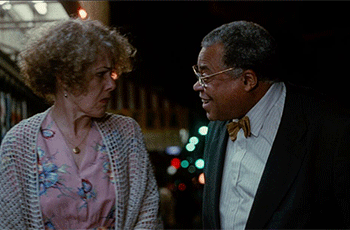ARTISTS RIGHTS NEWS | Artists Rights Foundation Aims to Guard Pic Integrity
01/01/1998The picture may speak a thousand words, but even a million words may not be enough for Hollywood's creative artists to change seemingly invulnerable copyright laws.
Yet, spurred by advancing technologies that can alter the film image far beyond what a film's creators originally conceived -- as well as a generation of Hollywood cineastes such as Martin Scorsese who believe in the primacy of film as art -- a cadre of directors, writers, cinematographers and other visual craftspeople are organizing as never before.
A key element in their frontal charge is the Artists Rights Foundation, a non-profit organization founded by the DGA in 1991 and quickly bolstered with an alliance including the Writers Guild, the American Society of Cinematographers, the American Cinema Editors, the Screen Actors Guild, the Society of Composers & Lyricists and the International Photographers Guild.
"The DGA," foundation president Elliot Silverstein explains, "was largely paying the freight for this effort initially, but everyone who is involved on the artistic side of filmmaking realized that this effort was in their interest. The light a cinematographer intends for a scene can be altered with colorization, or the color of costumes can be changed digitally in an instant. From the Directors Guild's side, we realized that we didn't have to be unilateral about this, and so we reached out to everyone in the creative community."
The foundation's fundamental purpose is to educate those in the industry and the viewing public about growing threats to the integrity of movies as filmmakers conceive them, with the ultimate goal of the U.S.' adhering to the internationally recognized artists rights contained in the Berne Convention, the international copyright convention to which the U.S. is one among 100 signatories.
While other Berne signatories such as and recognize not only the individual's commercial rights inherent in copyright but the moral rights of the creative author of the work, the has interpreted these provisions differently. "Berne intends to protect the rights of the individual," says Silverstein. "The tries to get around this by identifying corporations as persons."
Hollywood's moral rights advocates, led prominently by directors Martin Scorsese, Steven Spielberg, George Lucas and Sydney Pollack, cinematographer Allen Daviau and actor-producer Tom Cruise, argue that the following American reading of copyright protection flies in the face of Berne. They cite this clause in Berne as bolstering their claim to artistic rights: "Independently of the author's economic rights, and even after the transfer of said rights, the author shall have the right to claim authorship of the work and to object to any distortion, mutilation or other modification of, or other derogatory action in relation to, the said work, which would be prejudicial to his honor and reputation."
With rare exceptions (such as the late John Cassavetes), filmmakers do not own their films outright, and have not been able to claim artistic ownership in a court. The result, foundation members say, has been some dramatic alterations and distortions of movies as they are seen on video, laser disc or TV broadcast:
TV airings of "LAWRENCE OF ARABIA” that adopt the pan-and-scan technique to electronically pan across a widescreen image will show either Peter O'Toole's Lawrence blowing toward a candle, or the candle itself, but cannot show both.
Colorization of "IT’S A WONDERFUL LIFE" changes the mood of James Stewart's nightmare into a bright, bubbly Bedford Falls, not the dark, black-and- white moodiness of Frank Capra's original.
Such meticulously crafted sequences as the climax of George Cukor's "GASLIGHT" can now be electronically "speeded" so they fit into a TV broadcast's timeframe.
And beyond the frequent trimming of a movie from its theatrical release for its life on a video shelf or a TV screen, comes now the inclusion of a scene from one work into another, such as scenes from Spielberg's "DUEL" inserted into "THE INCREDIBLE HULK." With motion picture authorship in the exclusive hands of corporations comes, Silverstein argues, "an absurdity. A corporation claiming to be a person is absurd."
But because of this linkage of commercial and moral rights held by corporate entities, what Silverstein terms the "gang rape" of movies continues.
Foundation supporters freely describe their efforts as "uphill" and "long-term," but the group's various projects appear to be gathering momentum. Robert Wise is preparing a feature film, "WHO DID THAT?", while Joe Dante is readying a short, " NOW YOU SEE IT, NOW YOU DON’T," both of which will serve as educational tools to dramatize the effects of serious alterations and distortions of the movie image.
The first issue of a newsletter for foundation supporters is set for distribution at the end of November, while the foundation’s new web site (www.artistsrights.org) is already up, with enhanced graphics and more expanded user tools being added weekly.
While the foundation's usual work -- such as the annual John Huston Award for Artists Rights (won this year by Scorsese) and symposia -- continues, its legal defense fund supports an ongoing effort to find a test case of artistic rights violations by which the Berne provisions can be tested.
"We've come close to a test case," Silverstein says, "but we want to be very careful, so our lawyers feel they can prevail in court."
Robert KoehlerArtists Rights News Archive
2012
2001
1999
1998
- 8/1/1998: ARTISTS RIGHTS NEWS | Congressional Plea for Fairness: Transcript of Director Fred Zinnemann's Testimony
- 1/1/1998: ARTISTS RIGHTS NEWS | An Idea Behind its Time: Personal Rights for Creators of Copyrighted Works
- 1/1/1998: ARTISTS RIGHTS NEWS | Artists Rights Foundation Aims to Guard Pic Integrity
